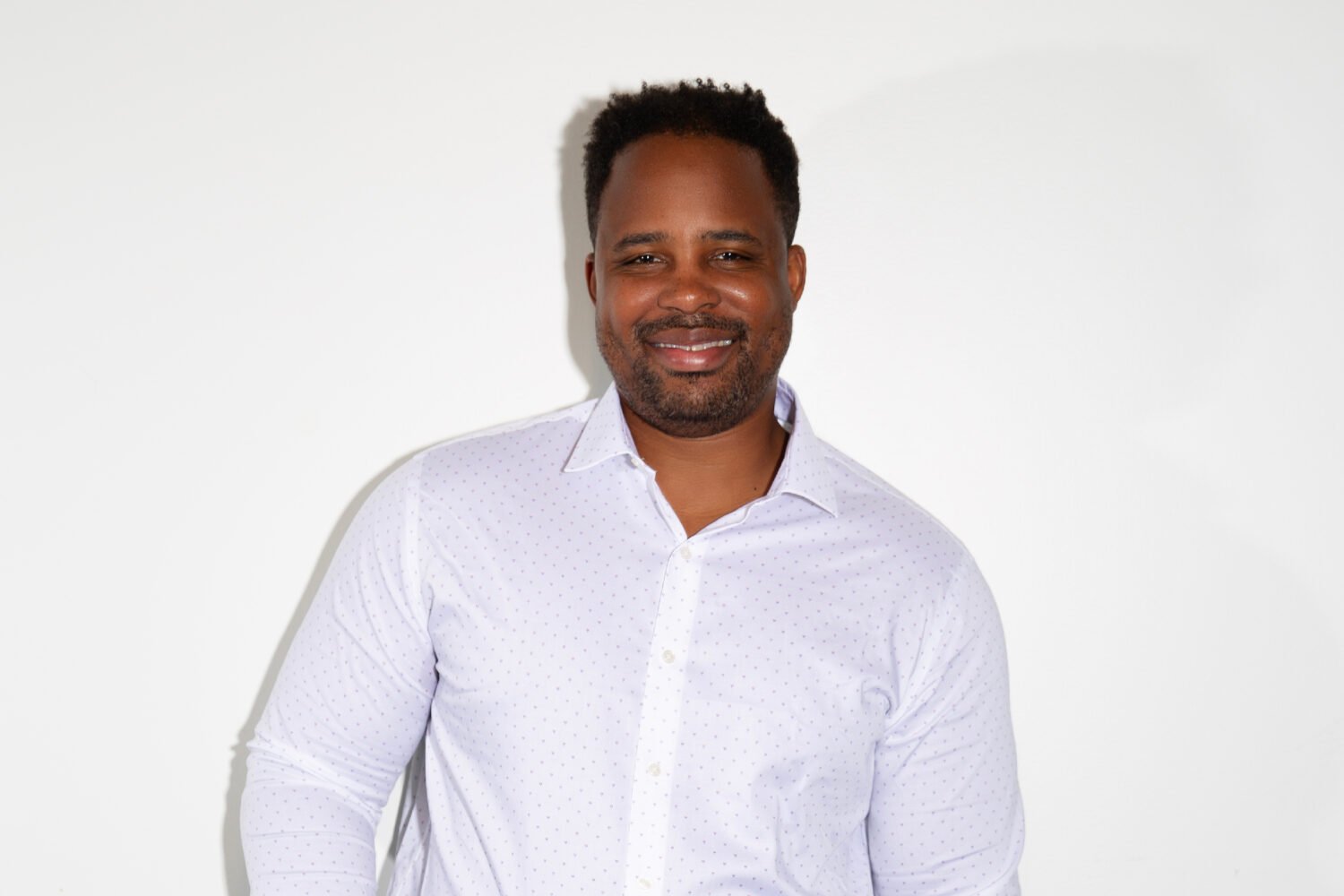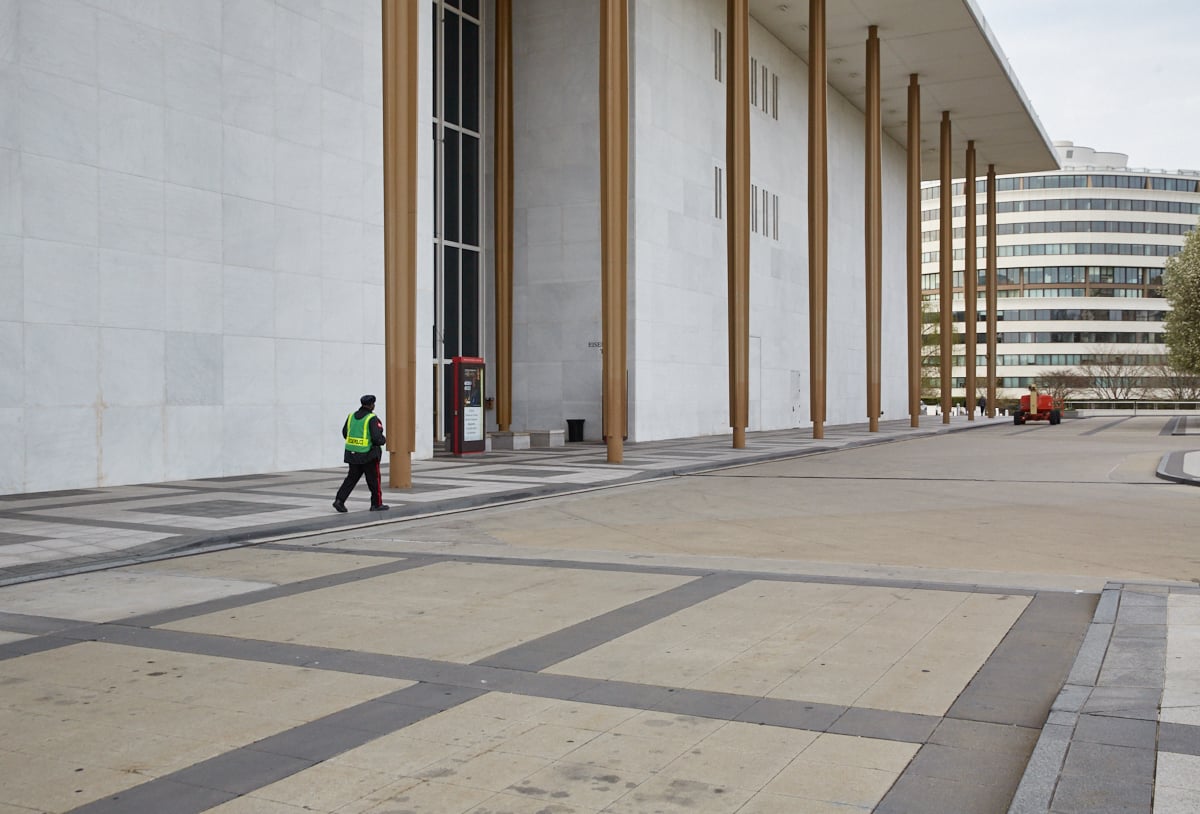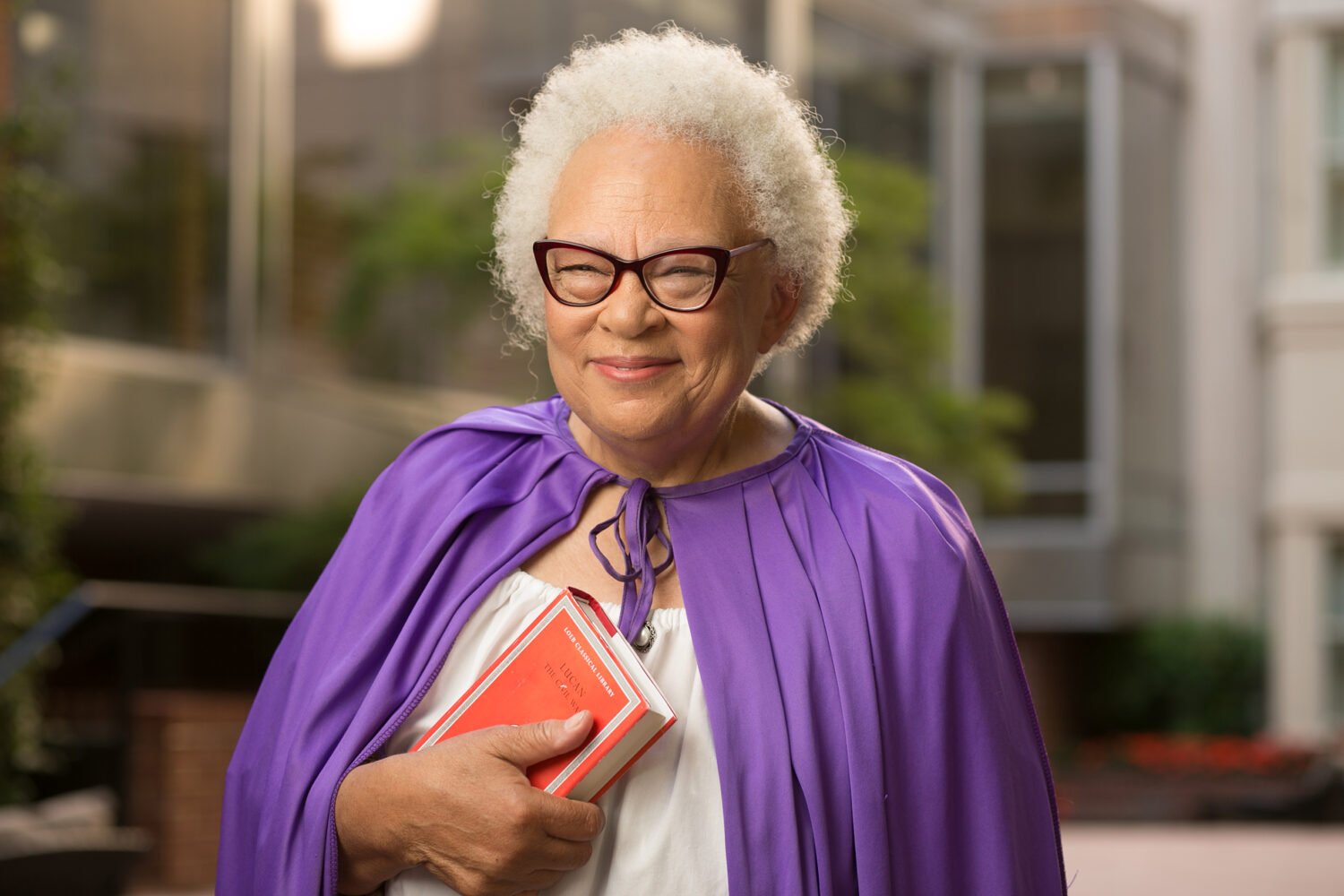On November 13, 1982, the Saturday after Veterans Day, thousands of Vietnam vets marched down Constitution Avenue. They wore mothballed uniforms, held hands, and wept. It was a homecoming parade seven years after the war.
In the 25 years since that day’s dedication of the Vietnam Veterans Memorial, millions have come to see what is now a landmark. They read the names of the 58,256 dead and missing on the wall. They stare at their reflections in the polished black granite. Few can resist touching it.
Yet the memorial was almost never built. Supporters had to fight to raise money and to put it on the Mall. While many veterans saw the black V design as dignified, others thought it resembled a ditch or gravestone—a condemnation of the war. Early backers of the memorial—including billionaire Ross Perot and Jim Webb, a decorated Vietnam vet who was years away from the Senate—denounced it as an insult to veterans.
The fight was bitter, fueled by emotions that had as much to do with the war as they did with the memorial itself. There were death threats, racial slurs, and broken friendships. Memories of that time still spark pain and anger.
The idea for a memorial came from Jan Scruggs, an infantryman who had gone to Vietnam in 1969 straight out of Bowie High. He was wounded and saw friends die. Thirteen were killed in a single explosion.
Scruggs came home shortly before the 1970 Kent State shooting. Women wouldn’t date him because he’d been in Vietnam. “That was the feeling in the air,” he says, “that we were unclean.”
A decade later, Scruggs, who was working as a civil-rights investigator at the Department of Labor, proposed a memorial while attending a meeting of Vietnam veterans here.
“It went over like a lead balloon,” says Robert Doubek, an attorney and former Air Force officer. The veterans wanted benefits; a memorial seemed superfluous.
But Doubek liked the idea. He and Scruggs incorporated the nonprofit Vietnam Veterans Memorial Fund. On May 28, 1979, Scruggs held a press conference to announce their plans.
Two Officers and a Grunt
Scruggs saw heavy combat in Vietnam and spent months “raising hell” after he was discharged. Doubek, an intelligence officer who interrogated North Vietnamese prisoners, went straight to Georgetown Law.
Doubek: “Scruggs was a very uninspiring person. He slouched. He didn’t dress like a professional—Levi’s and a checked shirt. He didn’t look you in the eye, didn’t have a solid handshake. But I was somewhat intimidated by him because he was an enlisted man and a combat veteran.”
Scruggs: “I went to see my boss and told him I was going to need a couple weeks off to build this monument.”
Doubek: “I remember watching the evening news on July 4. Roger Mudd closes out the broadcast and says, ‘And finally, an organization that has been formed to build a national memorial to Vietnam veterans has raised a total of $144.50.’ It was sardonic. You know—what can you expect from such a bunch of losers?”
John Wheeler, a staff officer at Army headquarters in Vietnam from 1969 to 1970: “Jan had risked one of the most horrible things you can do in America, which is appear foolish. I called him and said, ‘You can do this.’ He came over to my house and asked me to be chairman of the fund. It was one of the greatest compliments I’ll ever get.”
Doubek: “I was thinking about quitting right before Jack Wheeler became involved. I really didn’t have any faith in Jan. Wheeler was impressive. He was a West Point graduate, a graduate of Yale Law School. He had an MBA from Harvard, he was a member of the Army and Navy Club. He was a WASP.”
“How Much Are You Fellows Putting In?”
Scruggs, Doubek, and Wheeler found a champion for their cause in Senator Charles Mathias, a Maryland Republican. John Warner, who had been secretary of the Navy during the war and was in his first months on the job as a Republican senator from Virginia, also agreed to help. Ross Perot, a Naval Academy alum known for his efforts to rescue POWs, became one of the first donors.
Doubek: “Jim Webb came onto the scene in August of 1979. Everybody was in awe of Webb because he had written the first major Vietnam novel [Fields of Fire]. When we met, he quoted from British prime minister William Gladstone: ‘Show me how a country honors its dead, and I’ll show you the quality of a nation,’ or something like that.”
Warner: “Jan Scruggs walked into my office in a very quiet, humble way. I was taken aback by the man’s extraordinary humility. I immediately wanted to work with him.”
Scruggs: “I called Ross Perot. He told me he had had the exact same idea in 1977 and had offered to pay for a memorial in Washington if it had all the names [of the dead] on it and was in a prominent site.”
Monica Healy, legislative aide to Mathias: “One of the first fundraising events was in Senator Warner’s home [in Georgetown]. It was a breakfast event. Warner was in the middle of his pitch, and down the stairs walks his famous wife, Liz Taylor. She was in her pink robe and white slippers and looked like she had her makeup on from the night before.”
Warner: “In Hollywood, a lot of people don’t appear before midday. She came down unexpectedly and listened. As the attendees were getting up to leave, she said, ‘How much are you fellows putting in?’ ”
John Parsons, National Park Service official who oversees the addition of new memorials to the Mall and other public land in Washington: “We showed Jan a site on Memorial Drive [near the entrance to Arlington National Cemetery], where the Seabee Memorial is located. He could not believe we thought he’d be interested in something that insignificant. I next met him with Senator Mathias. I was called up there [to the Hill.] The senator said, ‘I think we’re talking about something different, Mr. Parsons.’ ”
Mathias: “We chose the site one day in the Senate reception room. We had an Exxon map of the District, and we marked the spot we thought would be good.”
Scruggs: “The idea of having all these names permanently displayed in Washington a few blocks from the White House, a block from the State Department, down the street from the US Congress—to me, this was poetic justice. These were the people everyone wanted to forget. They wanted this whole thing to go away, and I didn’t want it to go away.”
“The Best Goddamn Competition”
In July 1980, President Jimmy Carter signed legislation that set aside two acres on the Mall. The memorial fund organized a national design competition and picked an eight-person jury, including architect Harry Weese, who designed the Washington Metro system.
Doubek: “From the first day Scruggs walked into my office, I said it should be designed through a competition. I grew up in Chicago and went to the Tribune Tower. In the lobby there were photographs of the other designs, because it was designed in a competition. I always remembered that.”
Paul Spreiregen, Washington architect and adviser for the competition: “This was going to be the best goddamn competition that had ever been held for anything. I wanted to have senior gray eminences on the jury—people of broad and deep knowledge of design.”
Wheeler: “I was worried that Perot would help us to death, because he had such strong ideas. But Jan went ahead and got $160,000 from him for the competition.”
Perot: “I said I’d fund the design with one stipulation—that the men who fought over there like it. If we were to build a memorial to you, it should be one you like, right?”
The fund received so many designs that it arranged to use a hangar at Andrews Air Force Base to display them for the jurors. Among the entries was an abstract scheme created by Maya Ying Lin, the daughter of Chinese immigrants and a 21-year-old Yale undergraduate.
Spreiregen: “The jurors went individually into this display of 1,400 designs—a linear mile and a third. Harry Weese came back after a couple of hours and said, ‘Paul, there are two designs out there that could do it.’ He had spotted it.”
Maya Lin, in her book Boundaries: “The drawings were in soft pastels, very mysterious, very painterly, and not at all typical of architectural drawings. One of the comments made by a juror was ‘He must really know what he is doing to dare to do something so naive.’ ”
Doubek: “I remember seeing [Lin’s] design when I was in a hurry. I couldn’t conceptualize what the hell it was. It just looked like two black triangles.”
Scruggs: “As you looked at the other designs, they were miniature Lincoln Memorials. There was the helicopter on the pole, there was the army helmet with dog tags inside. They seemed so banal and average and typical compared to this.”
On May 1, 1981, the jury presented its unanimous choice of Lin’s design to the fund’s organizers, who were assembled in the hangar.
Wheeler: “I stood up and said, ‘It’s a work of genius,’ and started clapping. Everyone else clapped.”
Spreiregen: “There was an envelope on the back with this registration form. I opened it up, and saw ‘Maya Ying Lin.’ Who’s that?”
Andrus Burr, a Yale professor who taught Lin’s funerary-architecture course, for which the design was an assignment: “She was a pleasant, happy-go-lucky, not very serious kid. She was a casual student. I only gave her a B-plus for the course because she hadn’t done that well.”
Wheeler: “Maya Lin was perfect. She was right from central casting.”
Lin: “I remember one of the veterans asking me before the wall was built what I thought people’s reaction would be to it. . . . I was too afraid to tell him what I was thinking, that I knew a returning veteran would cry.”
“We Had a Problem Here”
Tom Carhart, a classmate of Wheeler’s at West Point, had been a volunteer on the memorial fund’s board until he entered the design competition. An amateur, he didn’t expect to win. After Lin’s entry was selected, he led the opposition.
Jim Webb maintained ties to the fund for months while insisting the monument be built in white marble and placed above ground. He eventually demanded the fund remove his name from its letterhead.
Carhart: “I was stunned when I saw the design. It seemed the opposite of a memorial to recognize and honor veterans.”
Milton Copulos, who was badly wounded in Viet nam and worked at the Heritage Foundation: “It was just names on the wall. There was no mention of what they had done, no flag, none of the things you would associate with a memorial. It was just two long black walls.”
William Chatfield, a former Marine who worked for the Defense Department: “I’m not saying it’s a ditch. It’s just black and in the earth. The artist herself called it a wall of death. So we had a problem here.”
Carhart: “I spoke to other veterans who were involved in the memorial fund, and we all agreed it was a slap in the face. But everyone had reasons they couldn’t publicly announce their disdain: ‘My wife will kill me’ or ‘I’ll get fired.’ Finally I said, ‘F— it. I’ll do it.’ There was a meeting of the Fine Arts Commission [which had to approve the design]. They said I could speak but only for two minutes. I contacted the media, and they were there in droves. I spoke for 15 minutes, and I wore a black suit with two Purple Hearts pinned to the pocket.”
Lin in Boundaries: “I remember Ross Perot when he was trying to persuade the veterans that it was an inappropriate design, asking me if I truly didn’t feel that the veterans would prefer a parade instead, something happy or uplifting.”
Perot: “The memorial did not honor all the soldiers. It just honored the dead. We have all these people who were scarred worse when they came home than they were on the battlefield. I wanted all of the men honored.”
Jim Webb, in a letter to Scruggs in December 1981: “I never in my wildest dreams imagined such a nihilistic slab of stone.”
Scruggs: “The most powerful piece of rhetoric was this simple phrase, and this is what killed us: Why is it that every other monument in Washington is white, but this one is black?”
A Communist Among Us?
Men on both sides say they received threatening phone calls at home and that their careers suffered because of their involvement. But the controversy helped the memorial fund raise money—eventually $8.4 million in donations.
Lin: “I remember at the very first press conference a reporter asking me if I did not find it ironic that the memorial was for the Vietnam War and that I was of Asian descent.”
Wheeler: “They attacked her for being a ‘gook.’ ”
Carhart: “One of the members of the other side said, ‘Carhart, at one of these meetings, called that woman a gook.’ That’s like saying, ‘Have you stopped beating your wife?’ No matter what I say, I’m wrong. The allegation endured.”
Doubek: “There was a reception at the Washington Post, and Chuck Hagel was there. He was working as the deputy administrator of the Veterans Administration. He said, ‘Some guy came to my office and left this document saying there was a communist on the jury.’
“There had to be someone totally without professional standards to be low enough to put it in the media. That was Pat Buchanan. It appeared on December 26, 1981, in his column.”
Scruggs: “If there was a communist involved in this, we wanted to find out. We got the jurors all on the phone and gave them the interrogatory. It turned out one of the jurors [landscape architect Garrett Eckbo] had given a course at the California Labor School in the ’30s or ’40s. But he was not teaching about Marxism or Leninism.”
The Compromise
The design received approval from the US Commission of Fine Arts and the National Capital Planning Commission, which have jurisdiction over the Mall. But James Watt, President Reagan’s secretary of the Interior, blocked the project because of the controversy.
Scruggs: “We’d gotten the camel through the eye of the needle, and then this crazy thing happens. It was just like getting punched in the stomach.”
Doubek: “Senator Warner set up this meeting, which we envisioned as three on their side, three on our side. Perot had sent a retired Air Force lieutenant general to drum up support. The meeting was held in the Senate conference room. It was packed. We were probably outnumbered five to one. The atmosphere was extremely tense.”
Carhart: “Maybe we did pack the meeting. We had a lot of emotional support on our side.”
Copulos: “J. Carter Brown [Fine Arts Commission chair and National Gallery of Art director] said that adding an American flag ‘would be like interrupting a beautiful aria with some country-western song.’ He later amended that to say ‘interrupting the national anthem.’ ”
George Price, a retired brigadier general who was a memorial-fund supporter: “Young men began to get up and say, ‘This is a black gash of shame.’ I’d heard as much of that crap as I could stand. I stood up and told them, ‘I’m tired of hearing you talk about black as the color of shame. We’ve gone through a civil-rights movement to prove that’s not so.’ ”
Scruggs: “A guy named Michael S. Davison—a famous general and World War II hero—listened for four hours and then stood up and said, ‘Gentlemen, I have a solution. Let us build this admittedly nonconformist memorial but add to it a statue to symbolize the spirit of the American fighting soldier.’ He was a very wise man. He knew to hold his firepower until people were tired.”
Carhart: “I stood up and said, ‘If you’re going to give us a statue, you’ve got to give us an American flag.’ The flag would be at the intersection of the walls, and the statue would be below that, somewhere within the V made by the walls.”
Scruggs: “We needed to get this built. That was the mission. If we needed to add a flag and statue, so be it.”
“The Soldiers Like It”
The two sides agreed to the compromise, but over Lin’s objections.
Doubek: “I went down and talked to John Parsons at the National Park Service. He had this thick document that needed a signature. He said, ‘Don’t you need to go back to your board and get the approvals?’ I said, ‘John, I have all the approvals I need.’ I signed it. I found a pay phone and called Jan Scruggs and I said, ‘I got the permit. I got the damn permit.’ ”
Parsons: “The dedication was on a very cold day. It had rained significantly. The crowd, which was standing down in the apex, destroyed the grass. People were in mud up to their ankles.”
Wheeler: “Jan and I were walking together on the crest above the memorial. It was quiet even though there were 150,000 people. I thought we might be getting a glimpse of the resurrection—meaning peace, unity, a sense of completion. A moment’s break in space and time.”
Doubek: “I was so exhausted and burned out that I said to myself, ‘I don’t give a damn if anybody likes it. It’s done. And if they don’t like it, they can go build their own.’ ”
Wheeler: “The first month of the memorial, it was cold and there were clamoring crowds of people. I was in the swim of people going back and forth, and this guy was holding up an older fellow so he could touch something. The son was holding up his blind father to touch his other son’s name.”
Parsons: “People were down there with matches and cigarette lighters and flashlights trying to find names at 2 o’clock in the morning.”
Carhart: “The Fine Arts Commission put the flag and the statue off in the woods. That’s a direct contradiction of the compromise. It’s a betrayal. A hundred years from now, people will wonder why we would ever create such a travesty to insult the men and women who served in an unpopular war. Maybe they’ll bury it.”
Perot: “The soldiers like it, and the families of the men who didn’t survive like it. That’s what it’s all about as far as I’m concerned.”
John Murtha, the first Vietnam combat veteran elected to Congress: “I go down there every once in a while just to watch people put their hands on the wall.”
Scruggs: “It was three years of work. Day after day, night after night, that’s all I did. It was part of my healing process, but the purpose was to help heal the wounds of the nation and my fellow veterans and to give them the recognition they’d never had.”
















